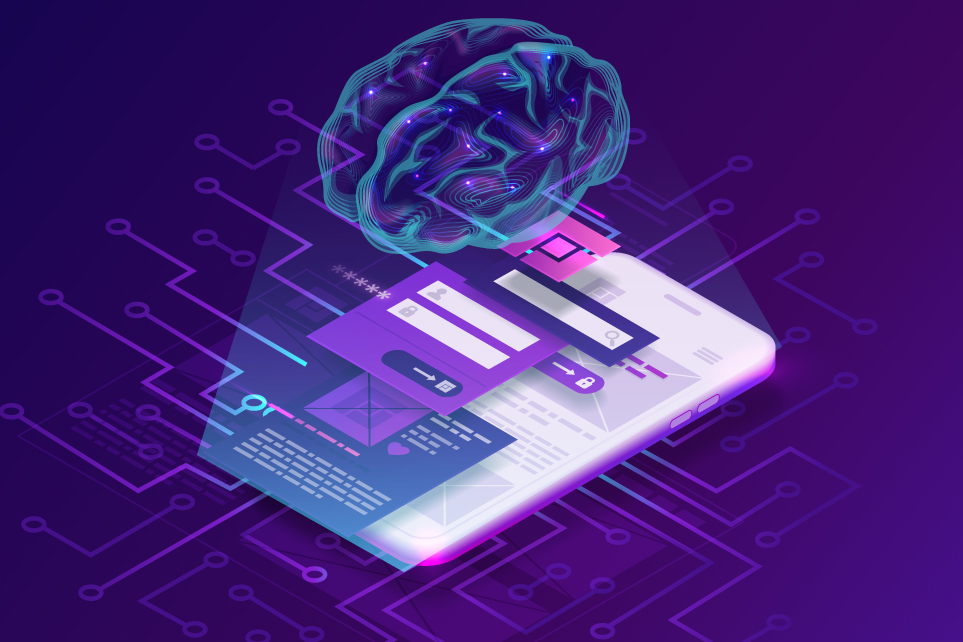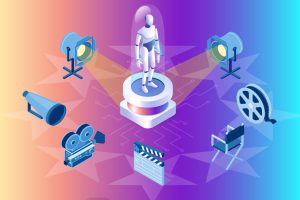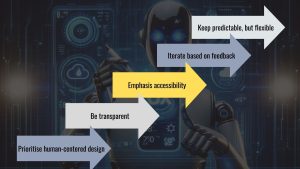UX and AI: Making Tech Work for People
Introduction In the digital age, technology evolves at a breakneck pace. Artificial intelligence (AI) is at the forefront of this evolution. However, as powerful as AI is, its...

Introduction
In the digital age, technology evolves at a breakneck pace. Artificial intelligence (AI) is at the forefront of this evolution. However, as powerful as AI is, its value lies in how well it serves people. This is where user experience (UX) comes into play. Together, UX and AI can create solutions that are not only functional, but also intuitive and enjoyable.
Why UX Matters in AI Applications
AI-powered systems can process vast amounts of data, make predictions, and even mimic human behavior. However, if users find these systems difficult to understand or interact with, their potential remains unrealised. For example, an AI-powered chatbot may provide accurate answers, but a confusing interface or poor conversation flow may frustrate users. This highlights the importance of UX in ensuring that AI effectively meets human needs.
Moreover, UX bridges the gap between technology and humans. It focuses on creating interfaces and interactions that feel natural. In this way, UX helps users trust and make faster decisions based on AI.

Key Challenges in Merging UX and AI
Designing for AI presents unique challenges. Unlike traditional software, AI systems often make decisions autonomously. This can lead to unpredictable results that can confuse users. Transparency becomes crucial. Users need to understand why the AI makes a certain recommendation or choice. Another challenge is the balance between complexity and simplicity. AI is complex by nature, but users should not feel overwhelmed. For example, while AI algorithms may analyze dozens of factors to recommend a product, the user interface must present the result in a clear and digestible manner.
Strategies for Integrating UX and AI
To make the most of AI while focusing on user experience, consider the following strategies:
Prioritise human-centered design
Start with the user’s needs, goals, and pain points. AI should enhance the user journey, not complicate it. Conduct user research to understand expectations and tailor AI accordingly.
Be transparent
Make sure users understand how AI works. Include explanations or visualizations of processes when appropriate. For example, showing the factors behind a recommendation builds trust.
Emphasis accessibility
AI applications should be inclusive. Design interfaces that are appropriate for different user groups, including those with disabilities. AI can even improve accessibility by offering voice commands, text-to-speech, or adaptive interfaces.
Iterate based on feedback
User testing is critical. AI systems learn and evolve, and so should their design. Collect feedback regularly and make iterative improvements.
Keep predictable, but flexible
Users value predictability. However, providing customization options can give them the ability to tailor the AI to their preferences.

Real-World Examples of UX and AI Collaboration
Successful products illustrate how UX and AI can complement each other:
- Smart assistants: Virtual assistants like Siri or Alexa have intuitive voice interfaces. They learn a user’s preferences over time, making interactions seamless.
- Personalised recommendations: Platforms like Netflix and Spotify use AI to suggest content. Their simple interfaces make it easy for users to interact with recommendations.
- Health apps: AI-powered tools like symptom checkers rely on clear UX to guide users through complex health data.
Future of UX and AI Collaboration
As AI continues to evolve, its integration with UX will become even more important. New trends such as explainable artificial intelligence (XAI) aim to make AI decisions more understandable. This aligns perfectly with UX principles of clarity and empowerment.
In addition, adaptive UX, where interfaces dynamically adapt to user behavior, is gaining popularity. AI can analyze data in real time to further personalise the experience. For example, a shopping app can highlight different features depending on whether the user is browsing the web or ready to make a purchase.

Conclusion
The partnership between UX and AI has huge potential. By focusing on users first, companies can create AI solutions that feel intuitive and accessible. This not only improves usability, but also builds trust and adoption. As we move forward, it will be key to keep people at the center of AI development. After all, technology should work for people, not the other way around.